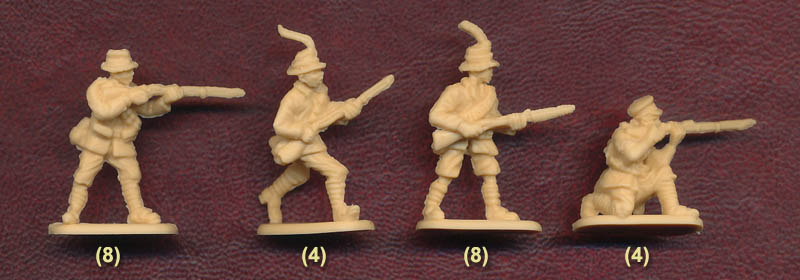
"Askari" Topic
4 Posts
All members in good standing are free to post here. Opinions expressed here are solely those of the posters, and have not been cleared with nor are they endorsed by The Miniatures Page.
Please be courteous toward your fellow TMP members.
For more information, see the TMP FAQ.
Back to the 19th Century Discussion Message Board Back to the Plastic Figures Message Board
Areas of InterestGeneral
19th Century
Featured Hobby News Article
Featured Link
Featured Ruleset
Featured Showcase Article The Acolyte Vampires return - based, now, and ready for the game table.
Featured Workbench Article combatpainter  shows how to make roads, using the formula of the late Ian Weekley. shows how to make roads, using the formula of the late Ian Weekley.
Featured Profile Article
Featured Book Review
|
| Tango01 | 03 Nov 2014 1:06 p.m. PST |
"Askari were the native troops employed by the Germans (and others) to defend and police their African possessions. The usual rule was that the ordinary rank and file were native, and the officers and NCOs were European, although in German South-West Africa all the soldiers were European. Elsewhere naturally this meant the Askari greatly outnumbered their colonial masters, and could have been a source for rebellion etc., but those in the German colonies were remarkably loyal, and served them well even during the long cat-and-mouse campaign during the First World War when a German Army consisting mostly of native troops avoided capture or destruction at their hands of their Allied pursuers. The uniforms given to Askari varied between colonies and units, but those on these men are quite typical. They wear a simply tunic with trousers and puttees, and as far as we can tell they wear ordinary army boots, which was common for German Askaris but unusual elsewhere. The ordinary soldiers in the bottom row wear the regulation short fez, although this is not so short as to be a good match for the Askari of Kamerun, so is better for German East Africa. Two have a neck curtain but one is missing this, and none have any sign of a badge on the front, which would normally have been there. Three of the figures on the top row have acquired brimmed hats, which is fine, and the fourth wears a peaked cap much like that of the officer. As the Great War progressed and the last colonial German Army marched all over south-east Africa, supply was virtually non-existent so items of uniform came from anywhere, making the mix of clothing found here perfectly suitable. Several have chosen to decorate their headgear with what looks like a feather or long leaf, which is plausible but of course can be trimmed off if not required…"


Review here
link Amicalement
Armand |
| Legbiter | 03 Nov 2014 2:51 p.m. PST |
My Grandfather [father's side] was a Quartermaster in the campaign against these men! Saw no action, apart from against ants, who ate his house, and Distinguished Himself principally by ensuring the Good Jam/marmalade didn't make it up to the front. Later in life he suffered for that, and quite right too! |
| bilsonius | 03 Nov 2014 11:45 p.m. PST |
Legbiter – misread that at first glance as "ants… ate his horse…"!! |
| Tango01 | 04 Nov 2014 11:18 a.m. PST |
Good point!.
I think that a house was a kind of exageration!. (smile). Amicalement
Armand |
|

